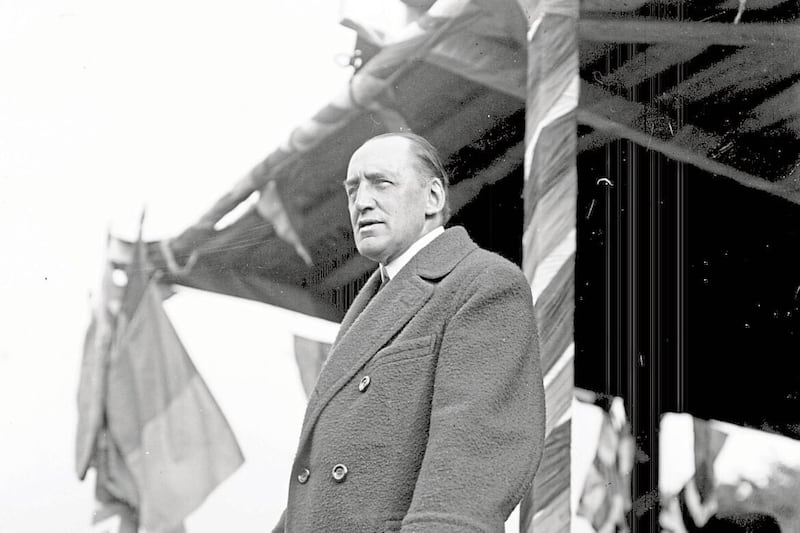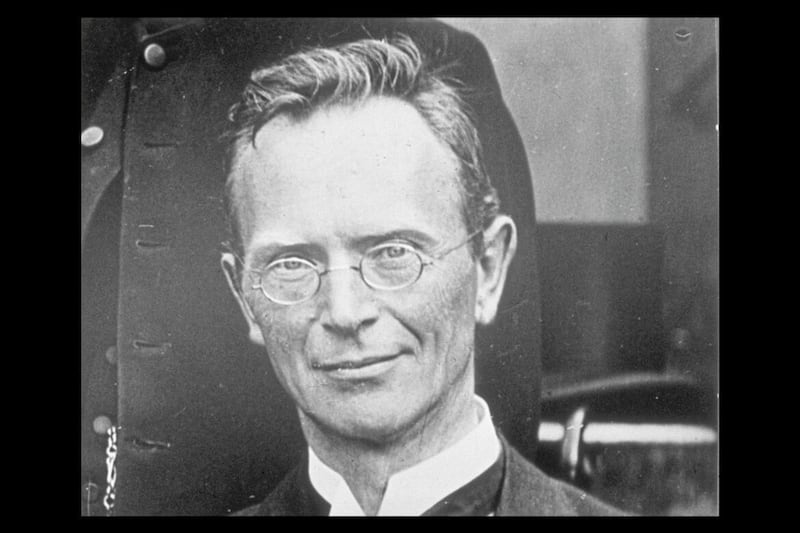ON MARCH 7 1921, the Protests and Appeals Committee of the Irish Football Association (IFA) met to schedule the replay of an Irish Cup semi-final tie between Dublin-based club Shelbourne and Lurgan-based club Glenavon.
The IFA had governed soccer for the whole island of Ireland from its establishment in 1880. As the first match which ended in a draw had been played in Belfast, it was almost universally believed that the replay would be held in Dublin.
The IFA Protests and Appeals Committee ruled it was too unsafe for matches to be played in Dublin due to the prevailing conditions caused by the Anglo-Irish War of Independence and Shelbourne was ordered back to Belfast for the replay.
The club refused to do so and was removed from the competition. The action to suspend Shelbourne was roundly condemned by the Leinster Football Association and all associated with the game in Dublin. It was the catalyst that led to the secession of the Leinster body from the IFA and the formation of the Football Association of Ireland (FAI) a few months later.
Although the division in Irish football occurred the same year as the Partition of Ireland, Partition was not the primary reason; rather, the split was primarily caused and nurtured by internal political factors.
It has been ascertained that the split in Irish soccer was caused by the political partition of Ireland. Many senior IFA figures were prominent unionists including the chairman James Wilton and Belfast Telegraph editor Thomas Moles.
Incidents of violence at matches manifested most notoriously at an Irish Cup tie between Glentoran and Belfast Celtic in 1920, where a mass brawl ensued and revolvers were used, demonstrated the link between football and the bitterness between nationalist and unionist communities in Belfast.
The ‘Flag Incident’ in Paris in February 1921 showed to many in Dublin that the IFA was not above politics and its politics was of a unionist outlook. The incident happened at an amateur international match between Ireland and France when students bearing the Irish tricolour flag were removed from the ground on the advice of IFA officials in attendance at the match.
The issues that exercised Dublin the most were of an internal political nature. Many believed there was an overriding Belfast bias in the selection of players for Irish international teams, the choice of venue for home internationals and the make-up of the IFA council and its sub-committees.
From 1882 to 1921, 75 caps were won by players from Leinster clubs to represent the Ireland senior international team. Ulster-based players won 798 caps in the same period. Dublin was the venue for six international matches in that period, Belfast 48.
The Leinster and Munster divisions were offered token representation on the IFA Council and its different sub-committees. All committees were dominated by Ulster delegates, particularly from Antrim. It was also felt the IFA was slower to offer funding assistance to southern-based teams over northern ones.
Many countered that it was from Belfast and its environs that soccer grew, there were more competitive clubs in Belfast, it embraced professionalism long before everywhere else did and the success of the Belfast clubs in League and Cup competitions was testament to the superiority of football in Belfast.
It could also be argued that the attendance record at IFA Meetings of representatives from Leinster and Munster was poor in the extreme, justifying the decision not to grant them additional representation on key committees.
After the split in 1921, attempts were made between the IFA and FAI to end the schism, with both Irish associations meeting on a number of occasions in the 1920s and 1930s.
The conferences in 1924 and 1932 came particularly close in bringing the rift to an end. The conferences of the 1920s and 1930s demonstrated that the split was not nurtured by the Partition of Ireland, but by internal power. The IFA, the fourth oldest football association in the world, looked to maintain its status, to concede as little as it could. The FAI ultimately would not agree on a settlement unless it was on total equality, right down to a seat on the International Football Association Board.
Most sports, such as rugby, Gaelic games, hockey and golf, ignored the new international political boundary created by Partition and remained all-Ireland bodies afterwards.
Cricket actually became united, in 1923, under the Irish Cricket Union banner.
Sport’s reaction to Partition demonstrates that the political division of Ireland was not followed by a social and cultural partition. Although required to be mindful of the new political realities on the island, most sports were neither compelled to nor desired to split along political lines.
Soccer was no different to other sports in that it was not compelled to split along political lines; it chose to split.
The sporting example shows that ambiguity, fluidity, and uncertainty were common features of the Irish border which provoked many responses from sporting and other bodies, the most common one being to remain governed on an all-Ireland basis in post-Partition Ireland.
Sports that remained governed on an all-Ireland basis adapted to Partition by incorporating inoffensive and neutral flags, anthems and emblems such as the four provinces flag, tailored to accommodate diverse political and cultural interests.
Unlike in soccer, those sports democratised internal governance structures to limit the scope for divisions and were mindful of the geographic dimensions within their organisations. A federalist approach to internal governance was the clearest path to internal unity.
The differences with the internal governance structures of soccer up to the split in 1921, where control was firmly rooted in Belfast, are striking.
Most sports that remained united also did not have the identity issues faced by soccer which was played and supported in large numbers by Protestants and Catholics, unionists and nationalists, from different classes.
Sports such as rugby, hockey, cricket and bowls were primarily administered by Protestants from the upper classes of society. The GAA, as a pan-nationalist association dominated by Catholics, did little to encourage Protestant and unionist membership.
Soccer, like athletics and cycling, had to cater for different religions and classes. This certainly provided challenges in maintaining unity for those sports and contributed to their ultimate division.
On the other hand, sports such as boxing and horse racing were able to incorporate members from multiple backgrounds without dividing, showing that the division in soccer cannot be explained by identity issues alone.
While the political climate in Ireland at the time and issues over identity were contributory factors, the difference in internal governance structures between soccer and other sports provides the most compelling evidence of why most sporting organisations remained all-Ireland bodies and soccer did not.
:: Cormac Moore is author of Birth of the Border: The Impact of Partition in Ireland (Merrion Press, 2019) and The Irish Soccer Split (Cork University Press, 2015, republished in paperback edition in 2021)








